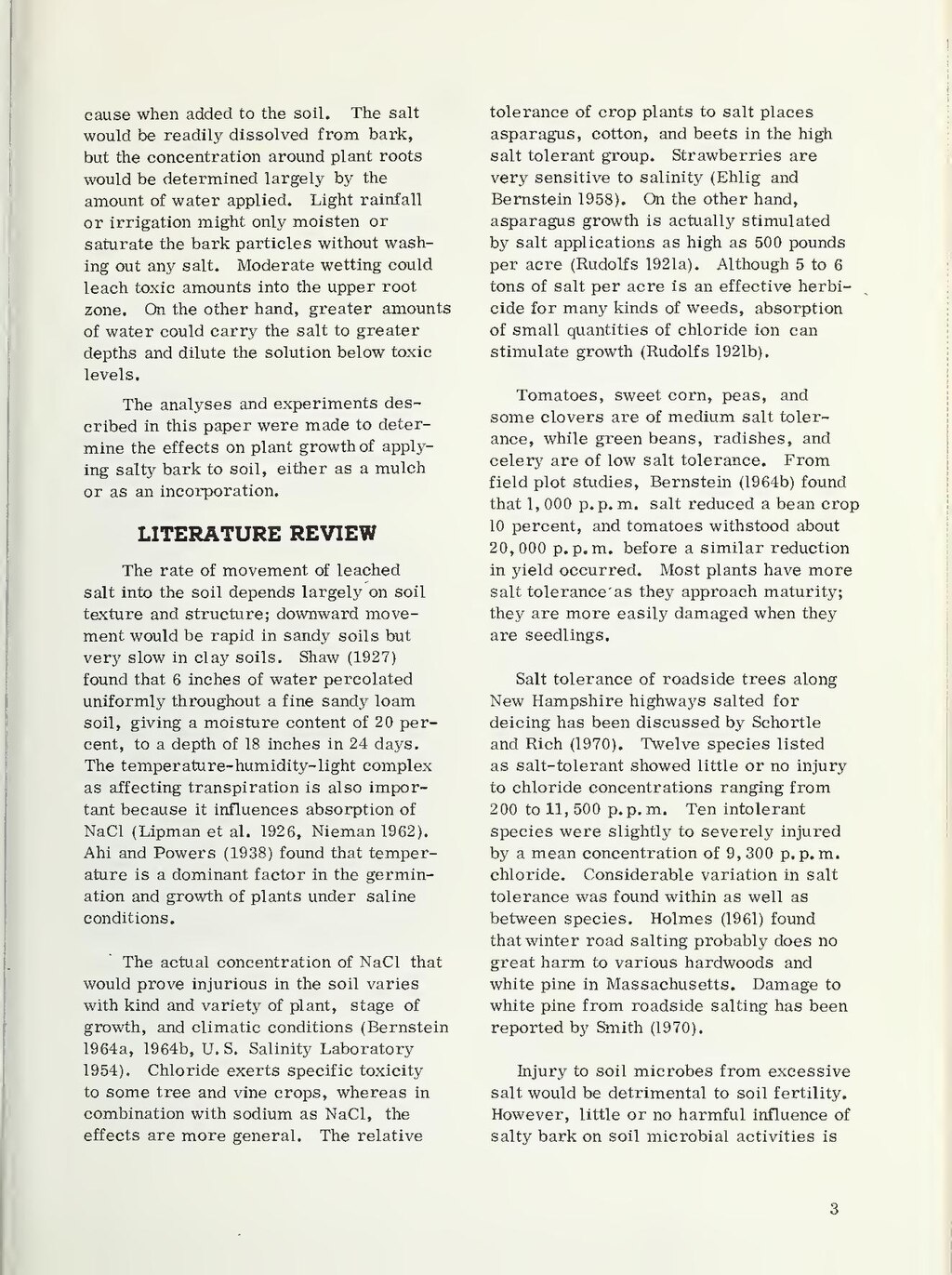cause when added to the soil. The salt would be readily dissolved from bark, but the concentration around plant roots would be determined largely by the amount of water applied. Light rainfall or irrigation might only moisten or saturate the bark particles without washing out any salt. Moderate wetting could leach toxic amounts into the upper root zone. On the other hand, greater amounts of water could carry the salt to greater depths and dilute the solution below toxic levels.
The analyses and experiments described in this paper were made to determine the effects on plant growth of applying salty bark to soil, either as a mulch or as an incorporation.
LITERATURE REVIEW
The rate of movement of leached salt into the soil depends largely on soil texture and structure; downward movement would be rapid in sandy soils but very slow in clay soils. Shaw (1927) found that 6 inches of water percolated uniformly throughout a fine sandy loam soil, giving a moisture content of 20 percent, to a depth of 18 inches in 24 days. The temperature-humidity-light complex as affecting transpiration is also important because it influences absorption of NaCl (Lipman et al. 1926, Nieman 1962). Ahi and Powers (1938) found that temperature is dominant factor in the germination and growth of plants under saline conditions.
The actual concentration of NaCl that would prove injurious in the soil varies with kind and variety of plant, stage of growth, and climatic conditions (Bernstein 1964a, 1964b, U.S. Salinity Laboratory 1954). Chloride exerts specific toxicity to some tree and vine crops, whereas in combination with sodium as NaCl, the effects are more general. The relative tolerance of crop plants to salt places asparagus, cotton, and beets in the highs salt tolerance group. Strawberries are very sensitive to salinity (Ehlig and Bernstein 1958). On the other hand, asparagus growth is actually stimulated by salt applications as high as 500 pounds per acre (Rudolfs 1921a). Although 5 to 6 tons of salt per acre is an effective herbicide for many kinds of weeds, absorption of small quantities of chloride ion can stimulate growth (Rudolfs 1921b).
Tomatoes, sweet corn, peas, and some clovers are of medium salt tolerance, while green beans, radishes, and celery are of low salt tolerance. From field plot studies, Bernstein (1964b) found that 1,000 p.p.m. salt reduced a bean crop 10 percent, and tomatoes withstood about 20,000 p.p.m. before a similar reduction in yield occurred. Most plants have more salt tolerance as they approach maturity; they are more easily damaged when they are seedlings.
Salt tolerance of roadside trees along New Hampshire highways salted for deicing has been discussed by Schortle and Rich (1970). twelve species listed as salt-tolerant showed little or no injury to chloride concentrations ranging from 200 to 11,500 p.p.m. Ten intolerant species were slightly to severely injured by a mean concentration of 9,300 p.p.m. chloride. Considerable variation in salt tolerance was found within as well as between species. Holmes (1961) found that winter road salting probably does no great harm to various hardwoods and white pine in Massachusetts. Damage to white pine from roadside salting has been reported by Smith (1970).
Injury to soil microbes from excessive salt would be detrimental to soil fertility. However, little or no harmful influence of salty bark on soil microbial activities is
3
